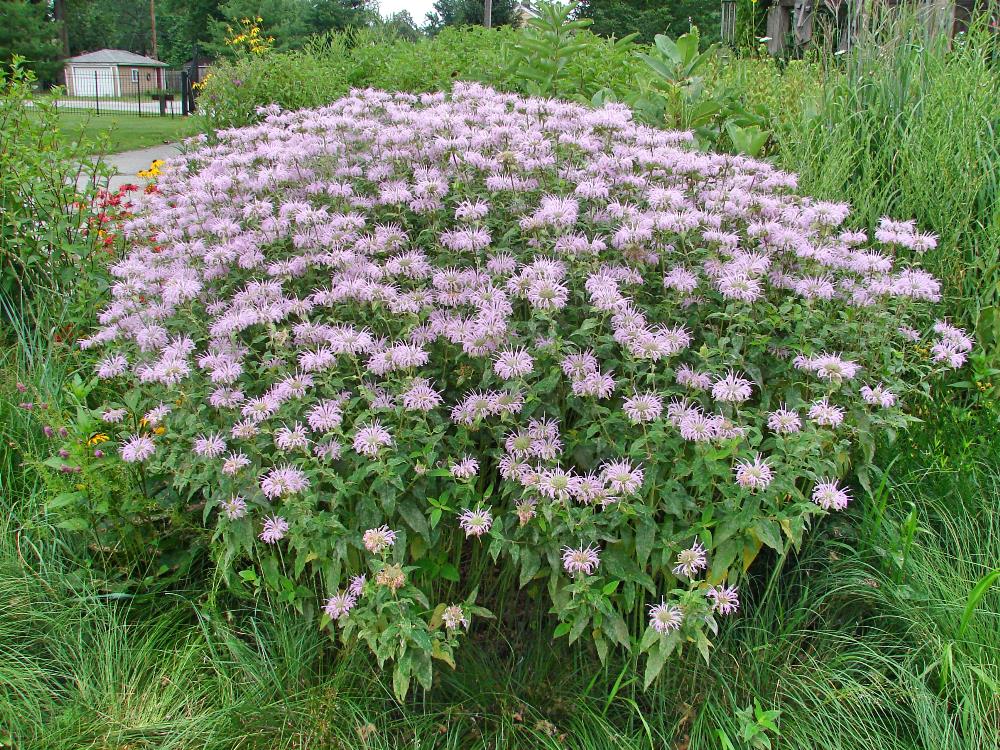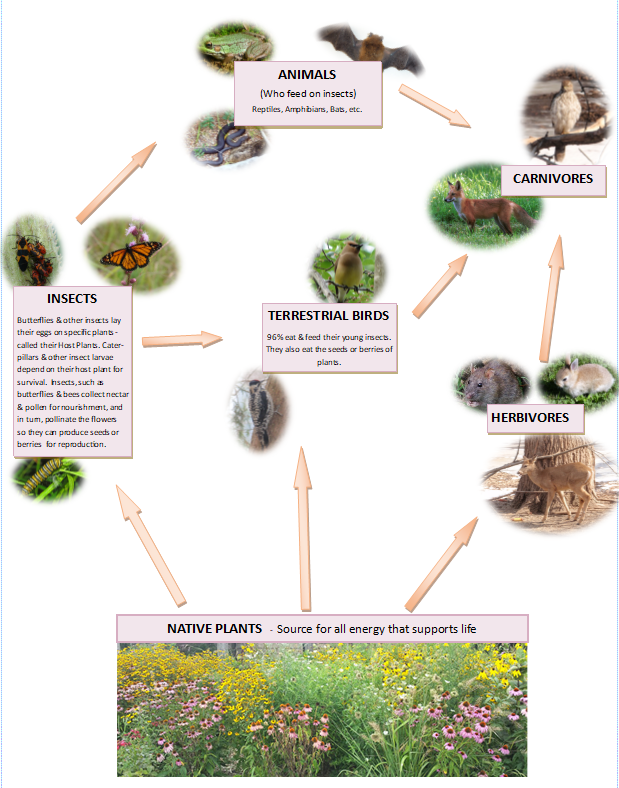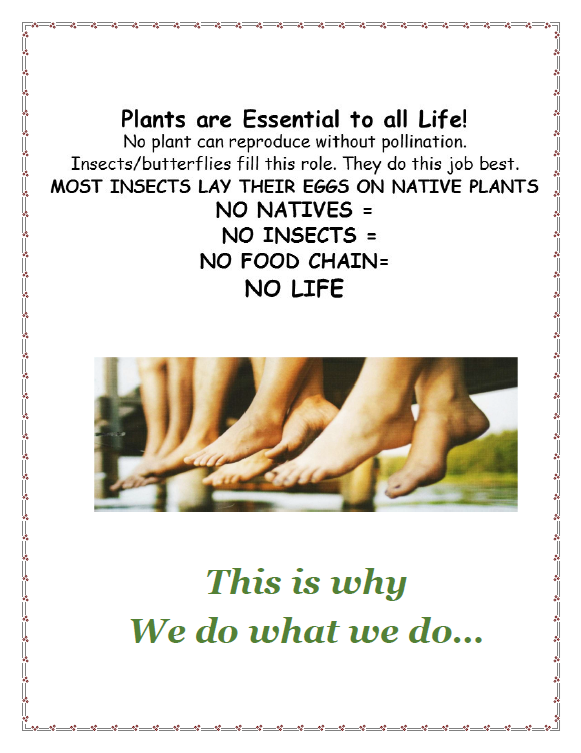Because they’re beautiful . . .

Click here to view WildOnes Member Gardens
Did you Know that April is National Native Plant Month?
What is a Native
Native plants are, in a word, local. They are plants that have been growing in a particular habitat and region, typically for thousands of years or longer. Also called indigenous, they are well adapted to the climate, light, and soil conditions that characterize their ecosystem.
Why Natives
Biologists and other scientists consider invasion by non-native plants to be one of the most serious problems facing native plant and wildlife populations in the United States.
Over thousands of years, natural check and balances develop, which greatly reduce the chance that a single species will increase in number to completely dominate a plant community.
However, when a non-native plant is introduced it escapes its natural controls and can become invasive. The characteristics that make many non-native plants attractive as ornamentals also increase their potential for invasiveness and make them difficult to contain. Prolific growth by a single plant species can be harmful because forests with a limited number of plant species provide very poor habitat for wildlife.
The Circle of Life

Pollinators Need Native Plants
Plants and animals take a very long time to evolve. During this time, they develop relationships to use each other for food, shelter, and propagation. When new plants and animals are introduced into this system, the existing plants and animals cannot easily cope with the change. The system breaks down and the original plants and animals decline and/or die out. In order to save the existing system, we need to plant native plants in our pollinator gardens.
Most pollinators have developed relationships with certain plants. In many cases, one particular insect depends on one particular type of plant for survival. A Host Plant is one that insects rely on as a place to lay their eggs, and as a food source for themselves and their young. An example of this is the Monarch butterfly. This butterfly will only lay eggs on milkweed (asclepias species). The caterpillars can only eat milkweed plants.
WILD ONES will help you learn!

